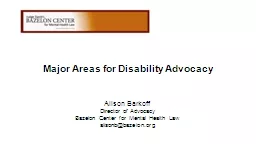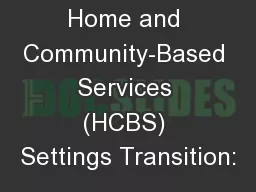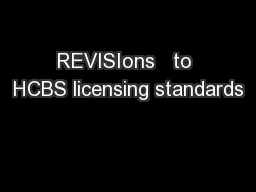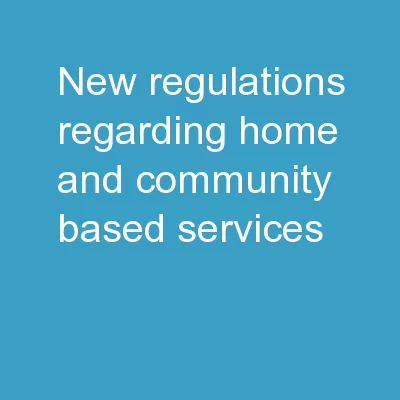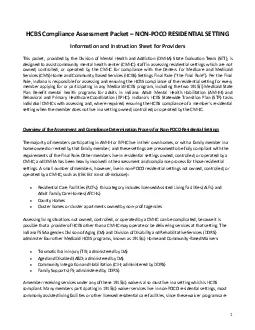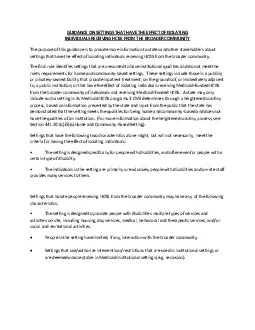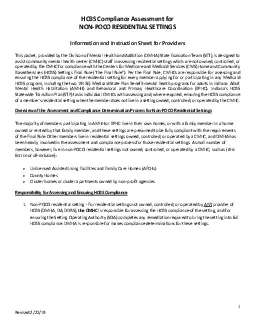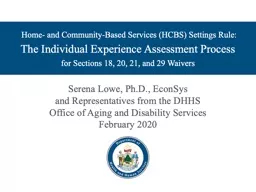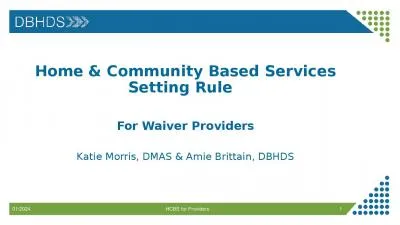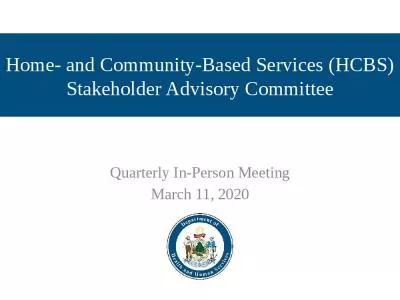PPT-The HCBS Settings Rule and
Author : phoebe-click | Published Date : 2017-09-29
Olmstead Impacts for Employment and Day Services Alison Barkoff Director of Advocacy Bazelon Center for Mental Health Law alisonbbazelonorg APSE Webinar Feb 4 2015
Presentation Embed Code
Download Presentation
Download Presentation The PPT/PDF document "The HCBS Settings Rule and" is the property of its rightful owner. Permission is granted to download and print the materials on this website for personal, non-commercial use only, and to display it on your personal computer provided you do not modify the materials and that you retain all copyright notices contained in the materials. By downloading content from our website, you accept the terms of this agreement.
The HCBS Settings Rule and: Transcript
Download Rules Of Document
"The HCBS Settings Rule and"The content belongs to its owner. You may download and print it for personal use, without modification, and keep all copyright notices. By downloading, you agree to these terms.
Related Documents

